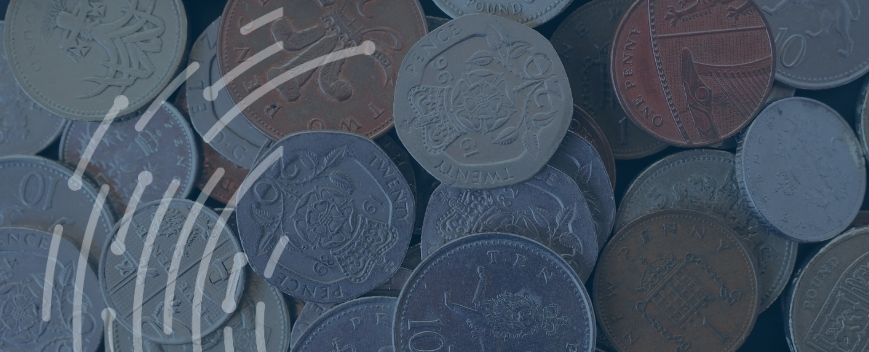The implications of declining access to cash

Access trade, receivables and supply chain finance
We assist companies to access trade and receivables finance through our relationships with 270+ banks, funds and alternative finance houses.
Get startedContent
The implications of declining access to cash
As the world becomes increasingly digitalised, the prevalence of cash in the global payments landscape is declining. The rise of electronic and mobile payment solutions has transformed how we transact, raising important questions about the future of cash.
Cash usage has fallen from 56% of all payments in 2009 to 17% in 2020. Before the COVID-19 pandemic, cash use was decreasing by around 15% every year, but in 2020 it decreased by a sharp 35%.
During 2020, nearly 25% of consumers surveyed by the Joint Authorities Cash Strategy (JACS) Group used cash only once a month or not at all and instead relied on card or other payments. This was a significant increase from 13% the previous year.
However, cash is still the second most common form of payment and is relied on by the most vulnerable people, such as the elderly and low-income households.
In February 2020, 10% of those surveyed relied on cash for all or most of their daily purchases.
To understand the modern phenomenon of declining cash and its potential impacts, it is important to understand why individuals and businesses have traditionally relied on cash, the implications of its declining use, and the main issues surrounding access to cash in today’s evolving payments landscape.
Why do people use cash?
Cash has long been the go-to method for individuals to make payments and access their money. It offers several advantages, including universality and acceptance, as cash is widely recognised and accepted in most places.
For those concerned about privacy and data security, cash transactions are generally preferred as they are more private and anonymous than electronic payment methods. Cash is also generally more reliable as it cannot be hacked and is not susceptible to IT failures and outages.
On 8 July 2022, Roger’s, a major telecommunications company in Canada, experienced a 15-hour nationwide outage, which, among many other costly issues, left some businesses unable to accept card payments. That’s a whole day that cashless Canadians were left uncaffeinated as they had no way to pay for their Tim Horton’s coffee.
The physical presence of notes and coins also provides some people with a sense of tangibility and control over their personal finances since they can physically monitor spending and budgeting in real time rather than just receiving a single bill at the end of the month that always seems to be just a little bit more than expected…
As a child, cash is a much more satisfying way to receive your allowance since digital bank balances don’t make the same clinking noise when you drop them into the piggy bank.
On a more serious note, cash is often a lifeline for individuals who are unbanked or underbanked, as it provides immediate access to funds without relying on formal financial institutions.
Why do businesses use cash?
Businesses have historically relied on cash transactions for various reasons.
Cash payments offer immediacy and finality, allowing businesses to receive immediate value without the risk of chargebacks or transaction fees associated with electronic payments.
They have the lowest direct fees in comparison with other payment methods, and many businesses consider cash payments to have no direct costs at all. They can make cash the preferred option for small businesses or those operating in areas with limited access to banking services or reliable IT infrastructure.
Moreover, cash transactions are often a cost-effective solution for certain businesses since they require less infrastructure and technological investment than electronic payment systems.
The rapid advancement of payment technologies in recent years, including mobile digital payment solutions like Square or ShopifyPOS, mean that businesses today face relatively few barriers to accepting cashless payments.
For those that still insist on cash, the main barriers are no longer related to technical or cost challenges but generally stem from customer preferences for using cash. Cash handling also provides opportunities for customer engagement, as many feel that face-to-face interactions during cash transactions can enhance customer experience and build trust.

What are the main issues that affect access to cash?
While the shift towards digital payments brings numerous benefits, it raises concerns about access to cash and its implications for certain individuals and communities.
One major issue is the diminishing availability of cash infrastructure, with some banks and businesses reducing their cash-handling services or closing physical branches altogether.
In many cases, the decline in the ubiquity of cash as a payment method can lead to cash deserts in some areas. A cash desert is where the cost of running an ATM is more than the money made by interchange fees, meaning they close down. Although banks and building societies run their own ATMs, independent ATM deployers may exit the market.
This can disproportionately impact vulnerable populations, including the elderly, low-income individuals, and those living in rural areas with limited access to digital services.
Furthermore, while many consider cash free of fees, this is not exactly true. Cash must still be transported to and from businesses in some cases multiple times per day, and paying for the services of the handful of entities that run these wholesale cash networks comes with costs.
As demand for cash falls and the provision to hold it declines, declining economies of scale will mean these services will become more expensive. Regardless of whether these extra costs are absorbed by the market or passed on to consumers, declining use of these services will make it increasingly more expensive for those who continue using cash.
Furthermore, the decline of cash can lead to exclusion and a widening digital divide, leaving some individuals without reliable means to conduct transactions or access essential services. Many governments worldwide have responded to this by supporting digital payments while safeguarding cash for those who need it.
As the world evolves towards a digital future, it is crucial for policymakers, financial institutions, and businesses to address the challenges surrounding access to cash. The decline in its prevalence in the global payments landscape brings both opportunities and challenges.
While electronic payment solutions offer convenience, efficiency, and innovation, it is important to consider the implications for those who rely on cash for their daily transactions.
By addressing the concerns and supporting diverse payment options, we can navigate the changing landscape while ensuring inclusivity and convenience for all.
Publishing Partners
- Payments Resources
- All Payments Topics
- Podcasts
- Videos
- Conferences














